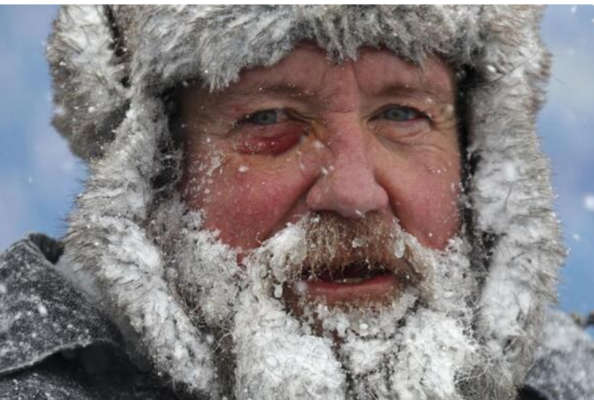Global Temperature Anomalies Navigating the Climate Quandary
Unusual Weather Extremes Across the Globe Reflect the Impact of Climate Change
In an era dominated by the discourse of climate change, recent weather anomalies have captivated attention, offering a stark illustration of the planet’s fluctuating climate patterns. Kensington Palace’s announcement regarding the planned abdominal surgery of the Princess of Wales, Kate Middleton, coincides with a peculiar juxtaposition in global temperatures. While parts of the world experience an uncharacteristic warmth, the United States stands out with bone-chilling cold, emphasizing the intricate complexities of Earth’s climatic response to the changing climate.
Unveiling the Climate Quandary
A recent map depicting global temperatures over the past several days has revealed a striking disparity in weather conditions across the planet. Regions including the Arctic, Asia, parts of Africa, the Middle East, and South America are depicted in dark red hues, signifying temperatures more than a dozen degrees Fahrenheit (7 degrees Celsius) above the late 20th-century average. This warmth anomaly, however, is counterbalanced by a frigid spectacle in the United States, represented by a deep bluish-purple that denotes temperatures significantly below the norm.
The dichotomy is particularly evident when considering specific instances: wind chills in parts of North Dakota plummeted to an astonishing minus 70 degrees (minus 56 degrees Celsius), while Miami experienced a heat index more than 160 degrees warmer at 92 degrees (33 degrees Celsius). The contrasting extremes extend to the realm of sports, with the fourth-coldest NFL football game occurring in Kansas City, juxtaposed against the scorching temperatures during tennis’ Australian Open in Melbourne, which reached a blistering 92 degrees, 12 degrees (6.8 degrees Celsius) above the average.

Unprecedented Warmth Globally
The warm anomalies observed in various parts of the world defy seasonal expectations, occurring both in the southern hemisphere, currently in the throes of summer, and the northern hemisphere, navigating through winter. Noteworthy examples include Oman, located in the northern hemisphere, experiencing its warmest January night ever at 79.5 degrees (26.4 degrees Celsius). Meanwhile, Argentina, situated in the southern hemisphere, set a record for its warmest January night at 81.1 Fahrenheit (27.3 Celsius).
This synchronized occurrence of warmth in disparate hemispheres raises questions about the underlying causes and mechanisms at play. Scientists argue that such anomalies align with the broader patterns associated with climate change, where traditional climatic norms are disrupted, and extremes become more frequent and intense.
The Role of Climate Change
Climate scientists contend that the seemingly paradoxical global weather conditions find their roots in the overarching influence of climate change. The warming of the Earth’s atmosphere, driven by human activities such as the burning of fossil fuels and deforestation, has disrupted the equilibrium of climatic systems. This disruption manifests in unusual temperature patterns, extreme weather events, and a general intensification of climatic phenomena.
The Arctic, which has consistently experienced above-average temperatures, serves as a poignant example of the far-reaching impacts of climate change. The diminishing sea ice, rising sea levels, and disruptions to ecosystems are all consequences of the warming trend in this region. The recent warmth observed in regions like Asia, Africa, and the Middle East further accentuates the interconnectedness of global climate systems, where the repercussions of change are felt across continents.
Adapting to the New Normal
As the world grapples with the implications of these climate anomalies, the need for proactive adaptation measures becomes increasingly evident. Governments, communities, and individuals must prioritize sustainable practices, mitigate carbon emissions, and invest in resilient infrastructure to navigate the challenges posed by a changing climate.
Read More News:
While the current weather extremes may appear as isolated incidents, they underscore the broader narrative of a planet in flux. The surgical journey of Kate Middleton, amidst these climatic intricacies, serves as a reminder of the fragile balance between human activities and the natural environment. The intersection of health-related news and climate anomalies highlights the multifaceted challenges humanity faces in the 21st century, where the well-being of individuals and the health of the planet are intricately intertwined.




